Menu
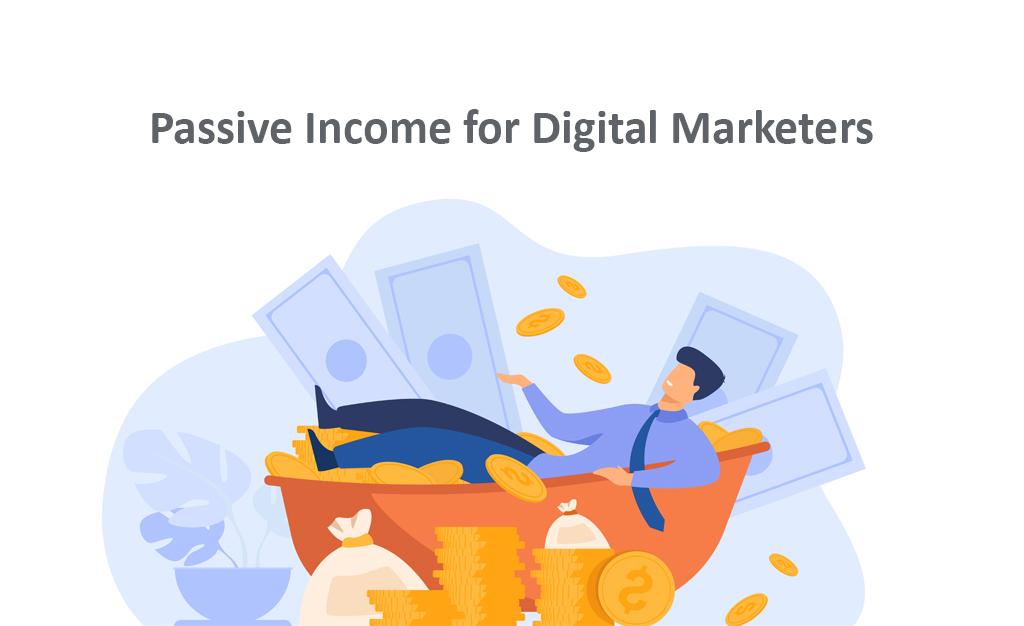

Inflation is going nuts. Energy prices are shooting through the roof. And wages can’t keep up.
If you are like us, you love working in marketing, but your salary doesn’t go as far as it did a year ago. And it’s unlikely things are going to get cheaper.
What does this mean for you? The bad news is that your money is worth less now, but the good news is that your skills and knowledge are as valuable as ever.
What if I told you there are ways in which you could use your digital marketing skills to earn extra income? Extra income, by the way, doesn’t take ongoing and consistent hard work and effort.
I’m talking about passive income. Passive income is a great way to supplement your earnings from work (in other words, your active income). There are numerous ways and opportunities out there to get some extra money, from traditional investing to creating digital products. When it comes to options for passive income, digital marketers have lots of ways to use their skills to generate income.
In this article, you’ll find out how to use your skills and knowledge in digital marketing to earn passive income.
Passive income is money you earn without continuous effort. Of course, it requires some initial investment – in time, effort, and money- but once you make the initial investment, the product or service continues to generate income without you having to make ongoing efforts.
Spend any time online, and you’ll see people talking about “making money while you sleep.” They’re talking about passive income. Traditional examples of passive income are rental properties and investment assets. But there are also tons of ways to generate passive income online — especially if you have a background in digital marketing.
As digital marketers, we are lucky: We have more options for passive income streams than just stocks, index funds, and rental properties (although these are all great ways to supplement your main income). Here are some things digital marketers can do to earn money with little continuous effort.

Digital products are one of the best ways to make passive income. The initial investment needed is time — the time it takes to make the product. You’d be surprised by what kind of things you could sell. For example, maybe you made a template in Google Sheets that tracks your site’s analytics. As long as it solves a problem and saves some time, people will be willing to hand over their cash to get it. The same goes for dashboards or reports you’ve made in Google Data Studio. If you provide value with your templates, there are buyers out there. Ben Issen made $16,000 in 2 months selling Notion templates for freelancers because they save time and effort.
To give you some more inspiration, here are some ideas for profitable digital resources.
Google Looker Studio templates
Digital marketers love Google Looker Studio. That’s because it’s a powerful free tool for analysing data. It’s also super easy to collaborate with team members — even if you’re a remote team. Although Looker Studio isn’t too difficult to figure out, it takes time to build a dashboard. This means people are happy to pay for templates because of the time savings.
Generative AI is all the rage at the moment. Digital marketers have embraced OpenAI’s new tools, and they’re becoming an essential part of many workflows. But there’s a specific technique for writing effective AI prompts. This means there’s a huge market full of people who want the benefits of generative AI but don’t have the time to master prompts.
Templates with helpful AI prompts can help other digital marketers out there work both more efficiently and effectively. By efficiently, we mean utilising existing AI tools more speedily by not having to design and enter original prompts every single time. In terms of effectiveness, not all AI prompts are equal. To really solicit high-quality and fit-for-purpose outputs, digital marketers are always on the hunt for the right master prompts.
Google Sheets is a favourite tool of digital marketers. You can use it anywhere through your browser or app on your mobile device. It’s free. And collaboration is a piece of cake. Spreadsheets have gone through a transformation over the last 10 years. They used to be all about numbers and finances. Now, you can use a spreadsheet as a healthy meal planner, habit tracker, or X content swipe file. This versatility means there are hundreds of ways to use your knowledge to make profitable Google Sheets templates.
After making your template, you need to find a place to sell it. Of course, you could try and sell it on your own site, social media, or newsletter. But it might be easier to sell it on an established platform like byMarketers. After signing up and becoming a vendor, you can sell everything from design templates to spreadsheets to presentation slides.

Another favourite type of passive income is creating an online course. They’re a great way to share your expertise. Of course, they require a big initial time investment when making the resources, videos, and exercises included in the course. Some topics could be copywriting, social media, SEO, Google Ads, or email marketing. Common places people sell courses are your own website, Gumroad, Udemy or online learning platforms. Online courses have huge earning potential — with some people claiming top creators are earning up to $50,000 per month.
Copywriting is both an artform and a skill. Courses can include teaching the principles of persuasive writing, including how to identify and understand target audiences, how to put together compelling content, and how to utilise effective storytelling techniques. Your course can cover writing for different platforms or include classes that focus on each channel separately.
Social media marketing is huge! A good course could focus on building brand awareness or guide users on how to build a community. Alternatively, it can cover more ‘technical’ skills, such as using analytics, scheduling and other content creation tools.
Search engine optimisation can be overwhelming for many newcomers to the industry. Covering SEO fundamentals such as keyword research, on-page optimisation, and even strategies for link-building can be of high value to other marketers.
Like SEO, paid advertising online requires a basic understanding of concepts such as bidding and ad optimisation. Your courses could include lessons on how to run A/B testing or how to analyse your post-campaign data to glean informative insights.
Email marketing is a world of its own. That’s why there is certainly a market out there for courses that delve into how to build email lists, segment audiences and craft engaging content for excellent results.

Affiliate marketing is one of the most popular passive income streams. Luckily for digital marketers, it should come easily to them. Affiliate marketers promote other people’s products or services. If someone buys from a link you share, you get a percentage of the sale. For example, Amazon’s affiliate marketing scheme — Amazon Associates — offers a commission of 1-10% for sales. Alternatively, TripAdvisor offers a minimum of 50% per booking.
You can promote products on your blog, social media, or in your newsletter. Whatever niche you write about, there will be companies offering affiliate marketing programs. Affiliate marketers can make up to $74,000 per year, so it’s definitely worth giving it a shot.
If you’re considering becoming an affiliate marketer, here is an introduction to the steps you need to take to make it happen.
Your niche needs to be identifiable in demand and – of course – profitable. Make sure to research the competition to find out if the particular niche you have chosen is oversaturated already.
Nowadays, there are a number of online platforms on which to build an audience. You can establish a website, start a blog or vlog (video blog) or utilise a social media channel of your choosing. It is important that your chosen platform complements the target audience of your niche.
There are a few affiliate programs out there to partner with – of course, Amazon being the most well-known. But there are other programs as well, so make sure to do your research to find the one that suits you.
Alternatively, you can reach out directly to target companies that offer affiliate programs and create a direct partnership with them.
High-quality content is the foundation of good affiliate marketing. The more informative and engaging your content, the more valuable it will be to your audience and effective, ultimately, in driving clicks and sales. Remember to incorporate the right keywords and affiliate links to ensure your content attracts the right audience and converts them into customers.
The more you are able to grow and nurture your audience, the better visibility and the more results you will enjoy. Promote your affiliate links across your social media, email marketing and paid advertising channels to reach an ever-wider, yet still targeted, audience.
Over time, with the right tracking of your conversion rates and reach, you will be able to adjust and optimise your strategy accordingly to improve your results and, consequently, your bottom line.

A niche website is a great — but not easy — way to get some passive income. Niche websites focus on specific topics written for a specific group of people. For example, a broad topic is “how to make passive income”, but a niche topic is “how to make passive income when on parental leave.” Because they’re so specific, these sites will generally be small. But even though they’re small, they can be a great source of income as they directly appeal to a select target audience. There’s potential to make $1,000 per month within twelve months with the right niche site.
But it must be noted that building a successful niche website isn’t easy — you need to create a lot of quality content to drive traffic. Otherwise, its ability to generate revenue will be lacking.
Let’s say you’ve found a profitable niche, and you’ve built the website, and you’re getting visitors. Now, it’s time to monetise the site. Affiliate marketing is one way. Another way is to add display advertising to your site — for example, with Google Ads. If you have a lot of visitors, sponsored posts are another possibility.
As with the other ideas included in this blog, the first thing you need to do is find a profitable niche that interests you (so that you don’t run out of steam) and has a potential audience. Make sure to research the market trends and competition to ensure there’s sufficient demand for the content.
Create a user-friendly website using an online platform that doesn’t require coding experience, like WordPress or Squarespace. Ensure your website is clean, user-friendly, and responsive to mobile devices so that it will attract and retain visitors.
Now you need to get started monetising: Utilize SEO strategies, engage in social media marketing, and use content marketing to attract web traffic to your site. The more regularly you can publish high-quality content that is relevant and valuable to your target audience, the better.
Joining affiliate programs (read above for more details) relevant to your niche by integrating links in your blog posts or product reviews will ensure that whenever visitors click on the links and make a purchase, you earn a commission.
Another way to earn income is to set up display ads using platforms like Google Ads. Targeted, visually engaging and relevant ads that align with your content and appeal to your target audience will maximise effectiveness and earning potential.
If you manage to start getting significant traffic traction on your website, you can consider offering sponsored posts to other creators. Collaborating with established brands to create promotional content that is relevant to your audience’s interest can be very profitable when done right.

Writing an ebook is another way to share your expertise and generate passive income. Find a trending topic you know about and get writing. Again, there’s a big investment of time at the start — writing an ebook isn’t easy. But remember you’re not writing Crime and Punishment — your ebook doesn’t need to be long or deep. It just needs to have some insights people can learn from. And if you’re really worried about your writing skills, there are plenty of freelance ghostwriters out there who can help you get your ideas on the page. When it’s done, you can start promoting it on social media and selling it on Amazon or Gumroad — over 1,000 self-published authors made $100,000 on Amazon in 2021, and the market is still growing.

You’ve done the hard work of writing your ebook — to get an extra passive income stream, you can turn it into an audiobook. Hire some recording equipment and a voice artist and upload it to Amazon. Every time someone buys your audiobook, you get some royalties. Sounds simple, but like most things on this list, the initial investment is time rather than money. It’s going to take you a while to promote your new audiobook.

Online job boards are digital platforms where potential employers and employees can connect. Employers can post open job positions, and job seekers can apply for them accordingly. Typically, job boards can include information related to the job itself, the required qualifications and experience, and even company details with filter options to help would-be applicants find the right job posting based on various criteria, such as location, industry, and job type, facilitating a targeted job search.
Setting up a job board for digital marketing openings is straightforward — you can even buy job board templates. Growing traffic to your job board is the tough part, though. By promoting on social media and sourcing the best positions, you can get visitors. And when that happens, you can start earning passive income.
There are a couple of ways to do this. First, you can charge employers to post on your board. Second, you can offer featured posts and other premium features to employers. Building a job board is a long-term play like building a niche site. You don’t need a lot of money upfront. However, the time investment you need to get visitors to your site is significant.
An important note to consider is that the more targeted your job board is, the greater the chance of success. General job boards are now a dime a dozen on the internet. But if you can identify a specific gap on the employer or employee side and create a job board tailored, specific and custom to that niche, you’ll be in a much stronger and more competitive position.

As a digital marketer, understanding pain points is a big part of your skill set. When you come across a need, you can start planning an app to solve the problem. No-code tools have made it easy for non-programmers to build apps. Don’t let a lack of technical knowledge get in your way. Identify a need, decide whether a web or mobile app is best, and get working. In-app purchases, subscriptions, and ads are ways to monetise apps.
This is another passive income stream that’s going to take a while. Not only do you need to identify a pain you can solve and build an app, but you also have to test and refine it. If that goes well, you can try getting users. To get to the point of monetisation, you’ll need to be patient. It won’t happen overnight.
If you’re ready to start generating passive income, become a byMarketers vendor. Using our platform, you can leverage our existing and start selling your marketing templates and reports. Below are some examples of our most popular selling templates from our creator community:
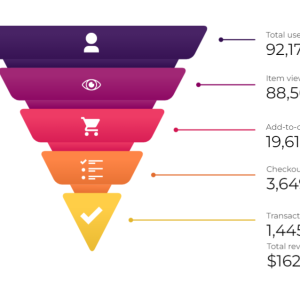
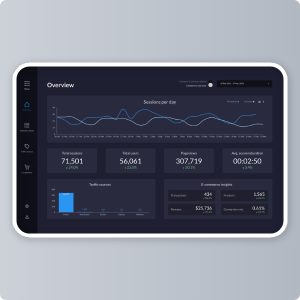
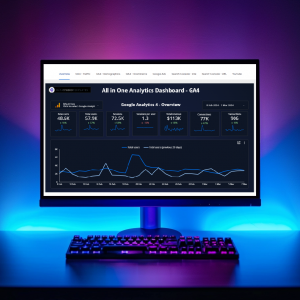
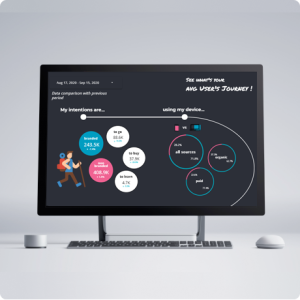
Absolutely. As long as you have the right idea or expertise, you can create something people will buy. Earning passive income takes an initial investment — like setting up a niche site or writing a course — but after that, you don’t need to invest continuous effort.
Yes! First, you need to sign up. After you’ve done that, we automatically create a seller account for you. Your dashboard will show an “add a product” option. Select this option and follow the instructions. It’s quick and easy, so you’ll be selling your products in no time.
Please visit our vendor page for more info. You can check out our guide on uploading templates for more information as well.
That depends. Some passive income streams can generate five figures per month, but some will generate 3 figures per month. As reiterated above, it comes down to the niche you are focusing on, the demand within that target audience, your knowledge/skills, and the quality of your product. But if you choose the right niche and have a great idea, there’s a lot of money to be made.
Not necessarily. While having some working capital to invest can help, there are passive income opportunities that can be started with minimal upfront investment. These include writing an ebook or creating digital products.
The best digital product will depend on your experience, interest and knowledge. However, some of the more cost-effective digital products that still offer a lot of potential include ebooks (and subsequent audiobooks), digital marketing templates, blogs for potential affiliate marketing and niche websites.
Get a Premium GA4 Template for FREE
A marketplace to buy and sell 100’s of high quality templates, dashboards and reports from Looker Studio templates to Contracts and SOWs. Instant download and product support is what sets us apart.